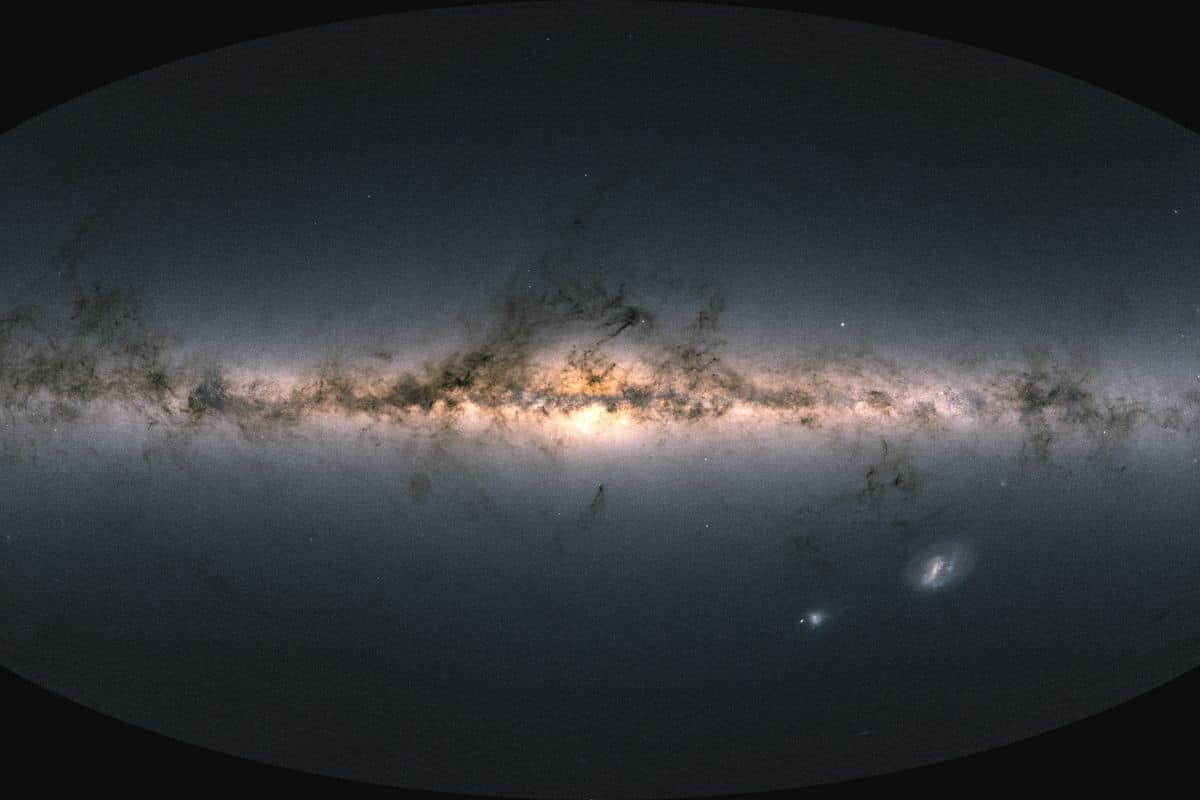
This appears to have formed about 13 billion years ago – only 0.8 billion years after the Big Bang.
Our Milky Way has a so-called thick and a thin disk. The thin disk contains most of our galaxy’s stars, which we recognize by the misty band of light in the night sky. The thick disk, on the other hand, houses far fewer stars. In a new study, the researchers studied unusual stars called ‘subgiants’ in both disks. This allowed researchers to build a timeline of the Milky Way’s formation. And that leads to a surprising discovery.
The Milky Way thus has a thick and a thin disk. But what exactly should you imagine with that? If you look at the Milky Way on a clear night – far from light pollution – you mainly see the thin disk of our galaxy. It is 100,000 light-years wide, but only 1,000 light-years thick, and is home to most of the stars in our galaxy. These stars are relatively young. Our sun is part of the thin disk, as are practically all nearby stars that you can see with the naked eye. The thick disk contains far fewer stars and you can’t actually see it with the naked eye. These stars extend further above and below the thin disk; the thick disk is about 3000 light-years thick and thus much thicker than the thin disk. And in this thick disk we find older stars.

Illustration of the Milky Way with the thick and thin disks in particular shown. Image:
Stefan Payne-Wardenaar / MPIA
Researchers are very interested in the different phases that our Milky Way has gone through. But to know the ins and outs of that, you also need to know how old stars are. However, the age of a star is one of the difficult parameters to determine.
subgiants
There is an exception. Because only the age of so-called ‘subgiants’ is easier to find out. Subgiants are stars in which no more energy is generated and which turn into red giant stars. Because the ‘subgiant phase’ is relatively short, its age can be determined with great accuracy. But… where do we find these stars? Fortunately, the Gaia space telescope can lend a hand.
Age
Gaia space telescope has been scanning the sky for years, trying to record the position, distance and movements of stars. With the help of Gaia, the researchers were able to locate, study and infer the age of 250,000 subgiant stars. “With the data from Gaia, we can determine the age of a subgiant very precisely,” said study researcher Maosheng Xiang. Armed with the precise ages of a quarter of a million subgiants scattered across the Milky Way, the researchers were then able to build a timeline of the Milky Way’s formation.
thick disc
It leads to a striking discovery. Because the analysis shows that part of the Milky Way known as the “thick disk” started forming 13 billion years ago – just 0.8 billion years after the Big Bang. And that’s unexpected. Because it means that the thick disk is about 2 billion years older than previously suspected.
Two phases
The analysis shows that the formation of the Milky Way can actually be divided into two different phases. In the first phase, which started 0.8 billion years after the Big Bang, the thick disk started to form stars. This process accelerated two billion years later when a dwarf galaxy merged with the Milky Way. This ‘star-forming burst’ – caused by the merger – caused the nascent thick disk to form the majority of its stars and continued to form until the gas was used up about six billion years after the Big Bang. The thin disk was formed during the second phase of the Milky Way’s formation.
All in all, the new study gives us a better picture of the life course of our Milky Way. It means that long-held assumptions – such as those about the age of the fat disc – need to be reconsidered. And possibly more wonderful discoveries lie ahead. Because a new dataset from Gaia is expected in June. “With each new analysis and dataset from Gaia, we are able to understand the history of our Milky Way in even more unprecedented detail,” said study researcher Timo Prusti.
Source material:
†Gaia finds parts of the Milky Way much older than expected” – ESA
Image at the top of this article: ESA/Gaia/DPAC; CC BY-SA 3.0 IGO. Acknowledgment: A. Moitinho.